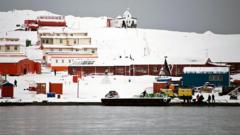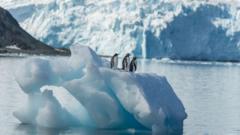The National Science Foundation (NSF) has recently faced deep cuts as the Trump administration seeks to reduce the federal workforce, leading to significant layoffs within its ranks, particularly impacting the critical Office of Polar Programs. Dr. Kelly Brunt, a program director whose work took her to Antarctica, has become emblematic of the ongoing issues plaguing U.S. scientific leadership in polar research. With roughly 10% of the NSF's 1,450 employees terminating their positions last week, the consequences of these cuts extend far beyond standardized research limitations to implications for national and international scientific collaboration.
The Office of Polar Programs is tasked with coordinating research efforts in the rapidly changing environments of both the Arctic and Antarctic regions—geomorphological areas increasingly of interest to global powers. Historically, Antarctica has been a designated scientific zone, supported by ongoing U.S. research efforts encompassing three year-round stations and essential logistical support, such as aircraft and ships. However, there is rising concern that the reductions may compromise U.S. strategic presence and research efficacy.
"Countries such as Korea and China have been aggressively bolstering their research and operational capacities in polar regions," states Julia Wellner, a marine scientist at the University of Houston, emphasizing the stagnation of U.S. initiatives in this space. Michael Jackson, an ex-program director at the NSF, pointed out that the agency, already operating below full capacity, is only able to execute approximately 60% of the scientific research possible from a decade and a half ago due to limited budgets and aging infrastructure.
The continuing strain on polar research budgets reflects a broader trend of dwindling U.S. investment in key scientific endeavors, raising questions about the long-term impact on the country's capability to respond to climate changes and secure its role as a leader in scientific innovation. As federal ambitions continue to cut into the very fabric of scientific inquiry, the polar regions stand poised to feel the brunt of this strategic setback.






















